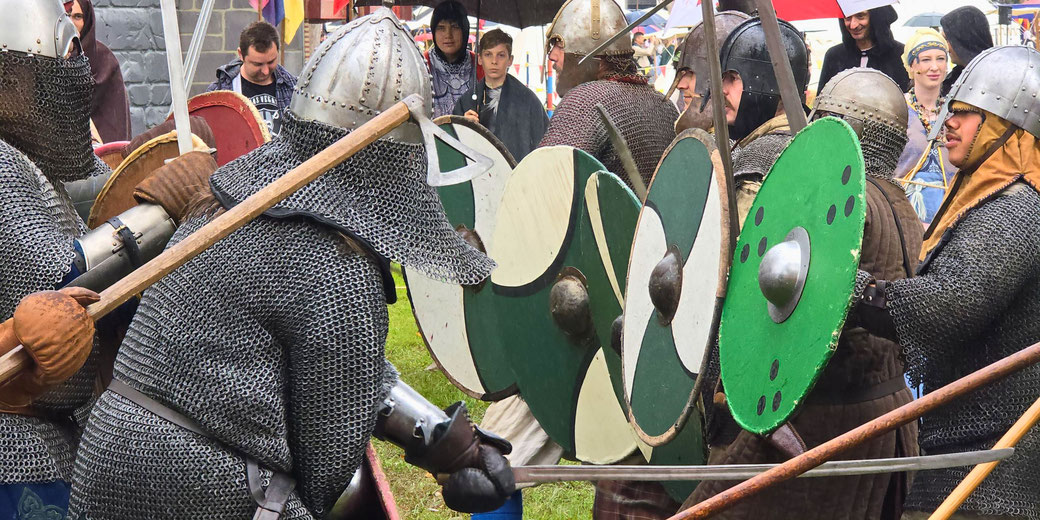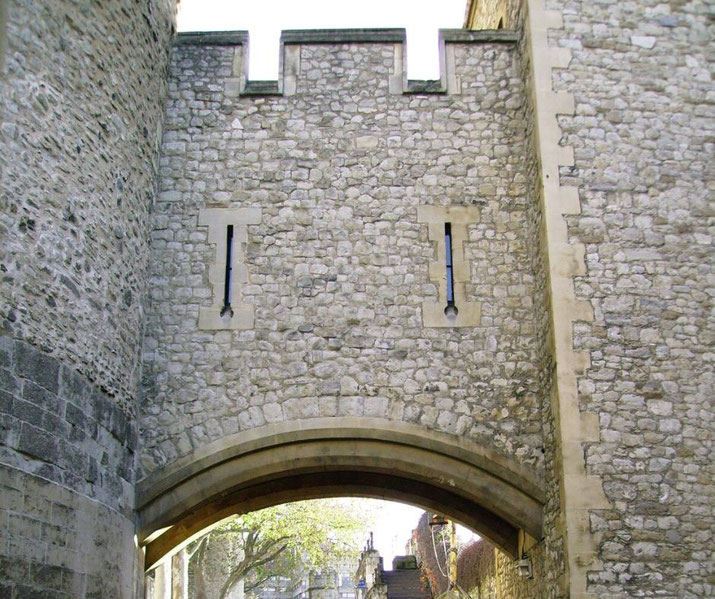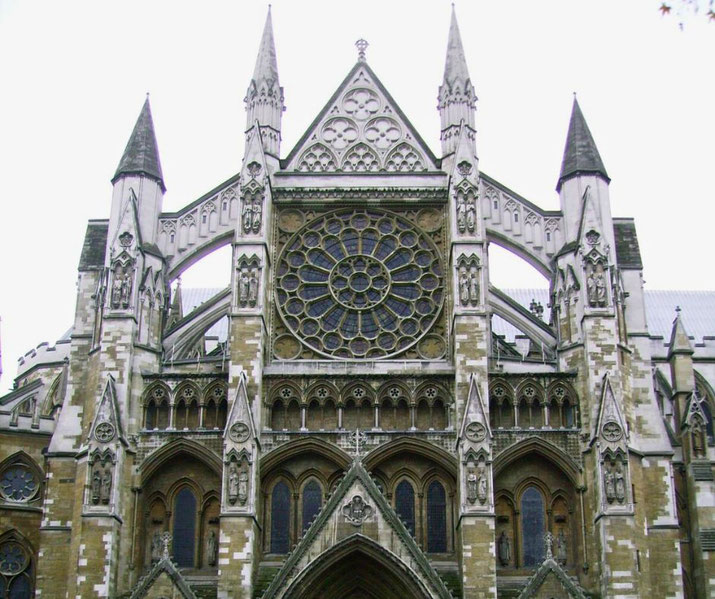Who were the Normans?

Emerging from Viking roots in the 9th century AD, the people known as the Normans quickly established themselves as formidable warriors in regions like Normandy, England, and Southern Italy until the end of the 11th century.
Their influence spread rapidly thanks to a series of dramatic conquests but also as a result to the introduced new legal systems, architectural innovations, and cultural exchanges.
Even today, their influence continues to be felt in the languages, legal systems, and cultural practices of many European countries.
The Viking origins of the Normans
Before their rise to power, the Normans were originally a people known as the 'Northmen', or 'Norsemen', since they appeared from the north to the people in Europe.
The Northmen were just one group of Viking and Germanic pagan tribes from the region of Scandinavia, particularly Denmark and Norway.
They took part in the Viking raids on Europe which began in the late 8th century, specifically around AD 793 with the raid on the monastery of Lindisfarne.
Such attacks continued into the 9th century and spread along the coastal settlements of the west coast of Europe.
Eventually, the Northmen settled in some of the areas they attacked, and, over time, they began to adopt some of the language, religious beliefs, and cultural practices of their new environments.
Why did the Normans settle in France?
As a separate Viking group, the Normans first rose to prominence in the late 9th century, when they began to raid and settle parts of France that were under the control of the Carolingian dynasty.
One of the most famous of the early Norman leaders was a warrior called Rollo.
He commanded a group of Northmen in a series of raids on the coasts of France and England during the 870s and 880s.
Rather than sailing away after their attacks, the Normans began to settle in northern France on a permanent basis.
Seeing these invaders as a genuine threat to his throne, the King of the Franks, decided to sign a treaty with them.
so, in 911, Rollo agreed to the Treaty of Saint-Clair-sur-Epte, which granted Rollo and his followers land in what is now Normandy, in exchange for Rollo's allegiance and protection against other Viking raids.
This treaty created the important Duchy of Normandy, and Rollo became its first duke until his death in AD 927.
Rollo's grandson, Richard I of Normandy, (who would also be the great-grandfather of William the Conqueror), expanded the region's borders during his time in power from AD 924 to 996.
Further Norman expansion in Europe
In though they had become part of the larger European kingdoms, the Normans retained a fearsome reputation for their skills in battle.
As a result, they continued to expand their territories and, during the mid-11th century, they had exerted influence over the French region of Brittany.
They even began invading other countries Europe. One of the most important regions for the next stage of their invasions was southern Italy.
In the 1020s, the Normans, including the Hauteville family, serves as hired mercenaries for rulers in southern Italy.
While there, the Normans began settling in these regions and began to claim parts of Italy for themselves.
Local rulers grew concerns at their presence and feared what might happen in the future.
So, the Lombards and an alliance of rulers under the Papacy attacked the Normans, but were defeated at the Battle of Civitate in 1053.
In 1057, a Norman leader called Robert Guiscard became Count of Apulia and began significant plans to expand Norman control in southern Italy.
He expelled the last of the Byzantine forces from there in 1071, captured Salerno in 1076, and Naples in 1077, eventually being declared the Duke of Apulia, Calabria, and Sicily by 1078.
In the space of just a few decades, they had become the most dominant force in southern Italy.
When they captured the city the Sicilian city of Palermo in 1071, they made it their capital of the new Kingdom of Sicily.
Why the Normans invaded England
While the Normans were expanding into Italy, those back in northern France were about to undertake their most audacious invasion to date.
In 1035, a new Duke of Normandy had come to power: William (who would later be known as 'the conqueror').
At the Battle of Val-ès-Dunes in 1047, he had consolidated his power over all of Normandy when he defeated a rebellion by his Norman barons.
He then made a diplomatic journey across the English Channel and met with the, then, King of England, Edward the Confessor.
According to later a later account from William himself, during this meeting, Edward promised the kingdom of England to the Norman Duke after his death, since he had no children of his own.
When Edward did die in January 1066, rather than William taking the crown, it set off a succession crisis in England.
One of the English lords, called Harold II, took the crown for himself, which obviously angered William.
As a result, William decided to launch a military invasion of England to seize the throne for himself.
In a stroke of luck, while William was preparing his invasion force, King Harold II of England had to rush to the north of England to defeat a Norwegian force at the Battle of Stamford Bridge.
While Harold held onto his throne, his army was exhausted and weakened from fighting this battle.
When Harold heard news that William had landed with his soldiers in the south of England, he had to turn his forces around the rush south to face him.
At the subsequent clash on the 14th of October 1066, King Harold II was defeated and killed at the Battle of Hastings.
This victory allowed William to claim the English throne, and he was crowned king in Westminster Abbey on Christmas Day in 1066.
To celebrate his victory at Hastings, William commissioned a famous work of art known as the Bayeux Tapestry, which is a 70-meter-long embroidered cloth that tells the story of the events leading up to and including the Battle of Hastings.
Subduing England
Following his conquest, William set about transforming his new English lands.
To achieve this, he brought in many new Norman administrators and nobles and built a large number of castles across England, which were used to control the local population.
These early Norman castles became known as 'motte and bailey' castles, because they consisted of a large mound (motte) with a wooden or stone keep (bailey) on top.
In addition, he introduced new laws and government structure, which was based on the 'feudal system'.
Under this system, all land was owned by the king, who granted it to his nobles in exchange for their loyalty and service.

Next, in 1085-6, William ordered a survey of all of his newly acquired land in England, which was compiled into a document called the Domesday Book.
It was an unprecedented census of England's land and resources, which provided an incredibly detailed record that allowed William to effectively administer and tax his new kingdom.
However, one of the most notorious events in William's early rule was the event known as 'The Harrowing of the North'.
This was a brutal campaign of violence and destruction during 1069-70 that William ordered against the people of northern England, who had rebelled against him.
It is estimated that it resulted in the deaths of 100,000 people due to either violence, starvation, or disease.
The long-term impact of the Norman conquest
The arrival of the Normans significantly changed both England and France.
Particularly in England, the introduction of many new customs and institutions transformed their society.
Much of the change was enforced under King Henry I of England, the youngest son of William the Conqueror.
In particular, the Norman Conquest brought about a huge change in the language spoken there.
The Norman upper classes spoke French, while the language spoken by the lower classes became Middle English.
Over time, the French words, mannerisms, and even accents changed the nature of the English language.
The Norman's style of architecture, especially their castles and churches, became the standard for all construction projects for hundreds of years.
One of the most iconic legacies of Norman architecture in England is the Tower of London, which was originally built by William the Conqueror in 1078.
But, also in Europe, the Normans remained a powerful cultural and military force.
In fact, Norman knights played a significant role in the First Crusade, with leaders like Bohemond of Taranto helping to capture key cities such as Antioch and establishing Norman principalities in the Levant.
Eventually, a separate Norman culture disappeared, or more accurately, assimilated into the broader European royal classes.
So, by the 13th century, there was no longer a distinct people group known as the 'Normans'.

Further reading
What do you need help with?
Download ready-to-use digital learning resources
Copyright © History Skills 2014-2025.
Contact via email
With the exception of links to external sites, some historical sources and extracts from specific publications, all content on this website is copyrighted by History Skills. This content may not be copied, republished or redistributed without written permission from the website creator. Please use the Contact page to obtain relevant permission.





